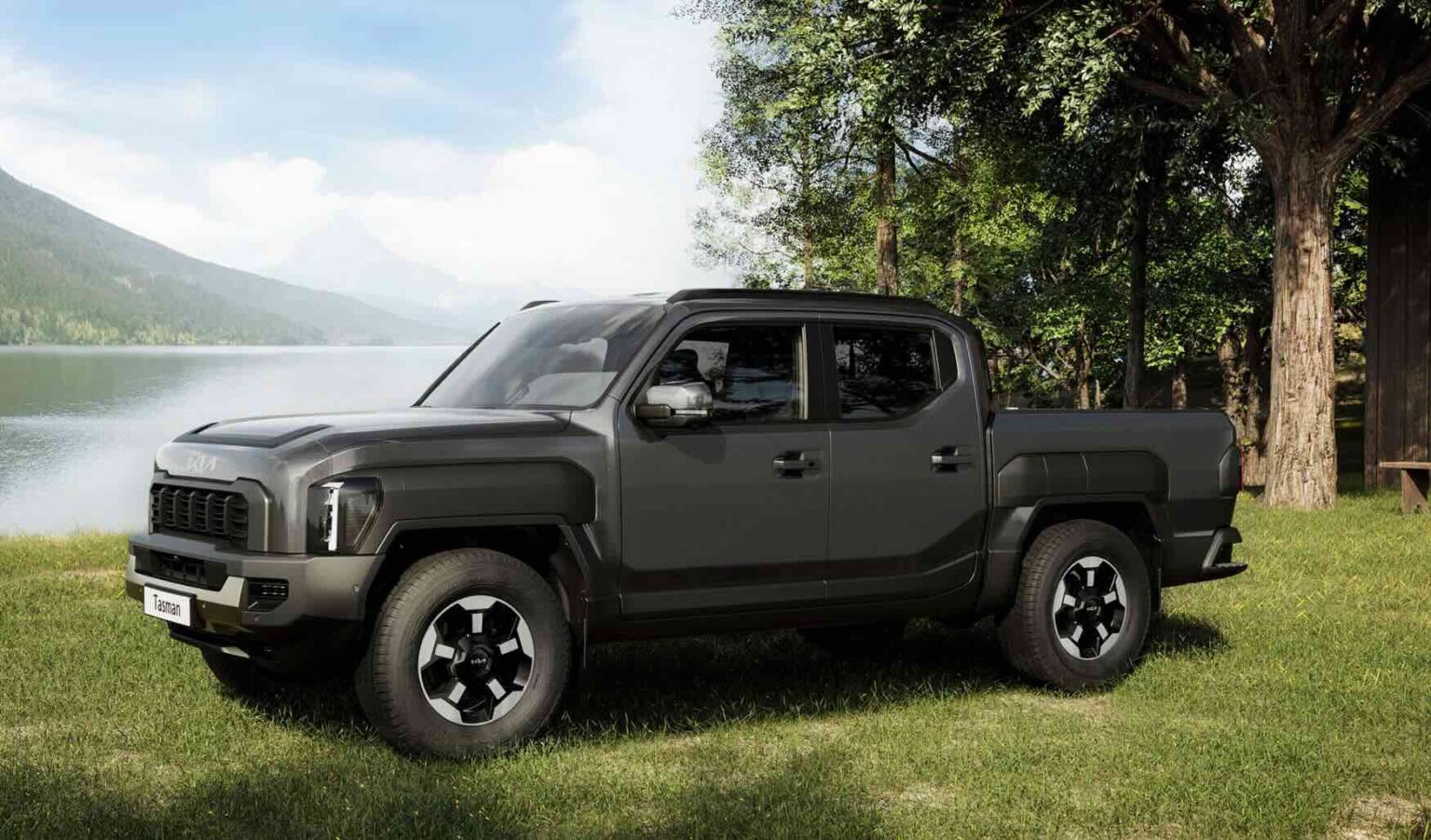Kia has introduced the Tasman, marking the company’s entry into the pickup truck segment with a model designed to balance on-road comfort and off-road capability. Developed on a new pickup platform, the Tasman aims to meet a broad range of practical needs by combining durability, load capacity, and versatility without many of the usual compromises seen in traditional pickups.
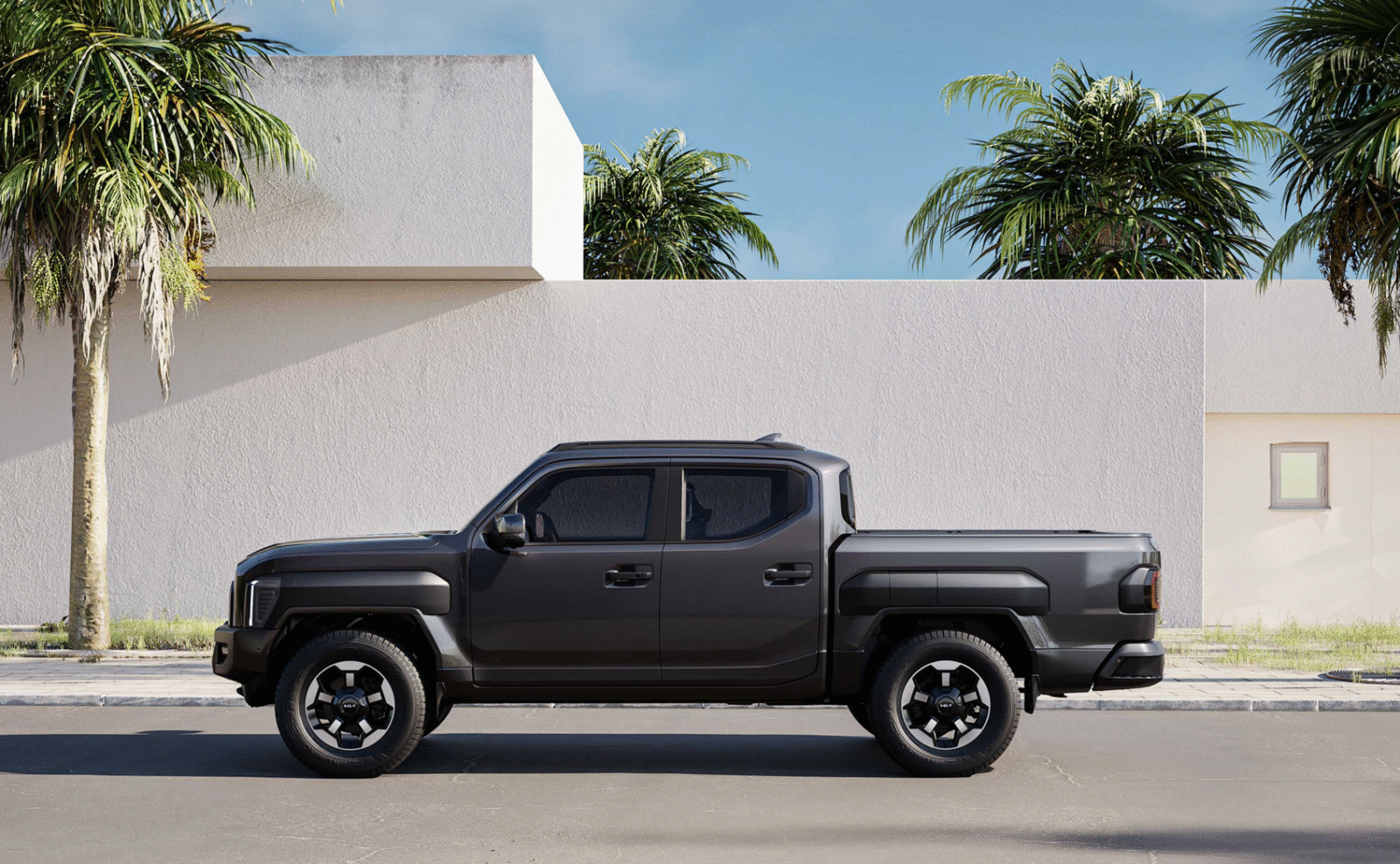
Built on a reinforced body-on-frame chassis, the Tasman offers a payload capacity of up to 1,151 kilograms and can tow up to 3,500 kilograms. This solid foundation supports its off-road abilities, including a ground clearance reaching 252mm on the off-road-focused X-Pro model. Its approach, departure, and ramp-over angles—32.2, 26.2, and 25.8 degrees respectively—are tailored to help the truck navigate uneven terrain. The front suspension uses a high-mount double-wishbone setup designed to improve corrosion resistance and clearance, while the rear employs a rigid axle with leaf springs, providing a balance between comfort when unloaded and robust load support when hauling.
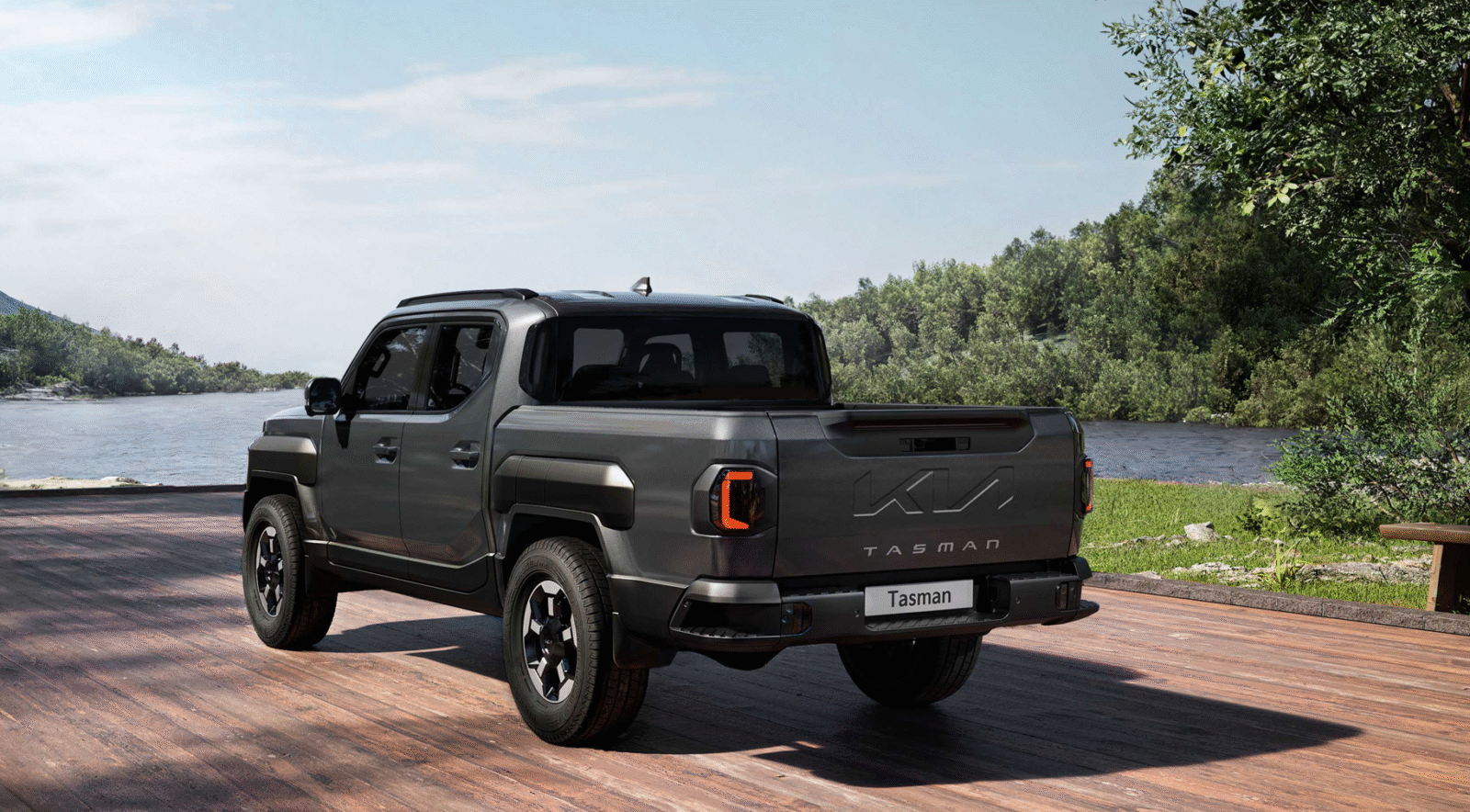
The Tasman’s suspension system includes shock absorbers with frequency-sensitive valves and urethane bump stops, contributing to a smoother ride across varying surfaces. Tire choices reflect usage intent, with the base trim fitted with highway-terrain tires for road use and the X-Pro model sporting larger all-terrain tires for more rugged environments. Key mechanical components, including the powertrain and exhaust, are positioned high above the frame to reduce the risk of damage during off-road driving. The air intake is positioned nearly a meter above ground level to assist in water fording up to 800mm deep at low speeds.
Standard four-wheel drive comes with a two-speed active transfer case offering multiple driving modes—rear-wheel drive, high- and low-range four-wheel drive, and an automatic all-wheel drive mode—allowing the vehicle to adapt to different driving conditions. An electronic locking differential aids traction on slippery or uneven surfaces, while terrain-specific drive modes fine-tune throttle response, torque distribution, and traction control. In regions like the Middle East and Africa, the Tasman features a ‘Desert’ mode tailored for sand dunes, including enhanced cooling systems.
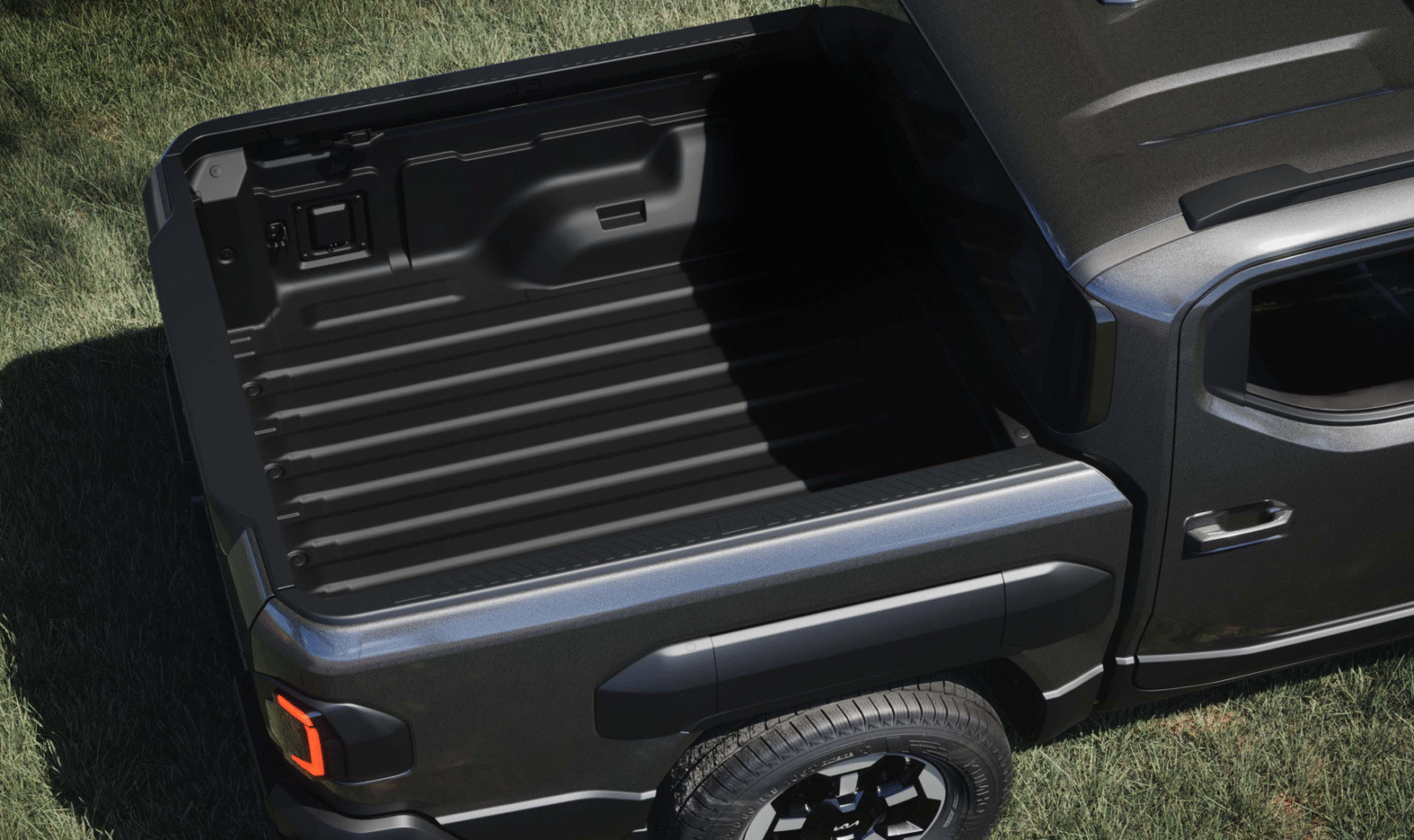
Additional off-road technologies include a low-speed off-road cruise control, enabling steady control under 10km/h, as well as a ground view monitor that provides real-time visuals of underbody terrain through the infotainment screen. Drivers also have access to an off-road page displaying key vehicle data, helping manage engine, transmission, and cooling systems during challenging conditions.
Powertrain options for Middle Eastern and African markets include a 2.5-liter turbocharged petrol engine paired with an eight-speed automatic transmission, and a 2.2-liter turbo diesel engine available with either an eight-speed automatic or six-speed manual transmission. To support heavy towing, the Tasman incorporates enhanced cooling systems, including a larger radiator and advanced oil coolers, with additional water-cooled components for harsh desert towing.
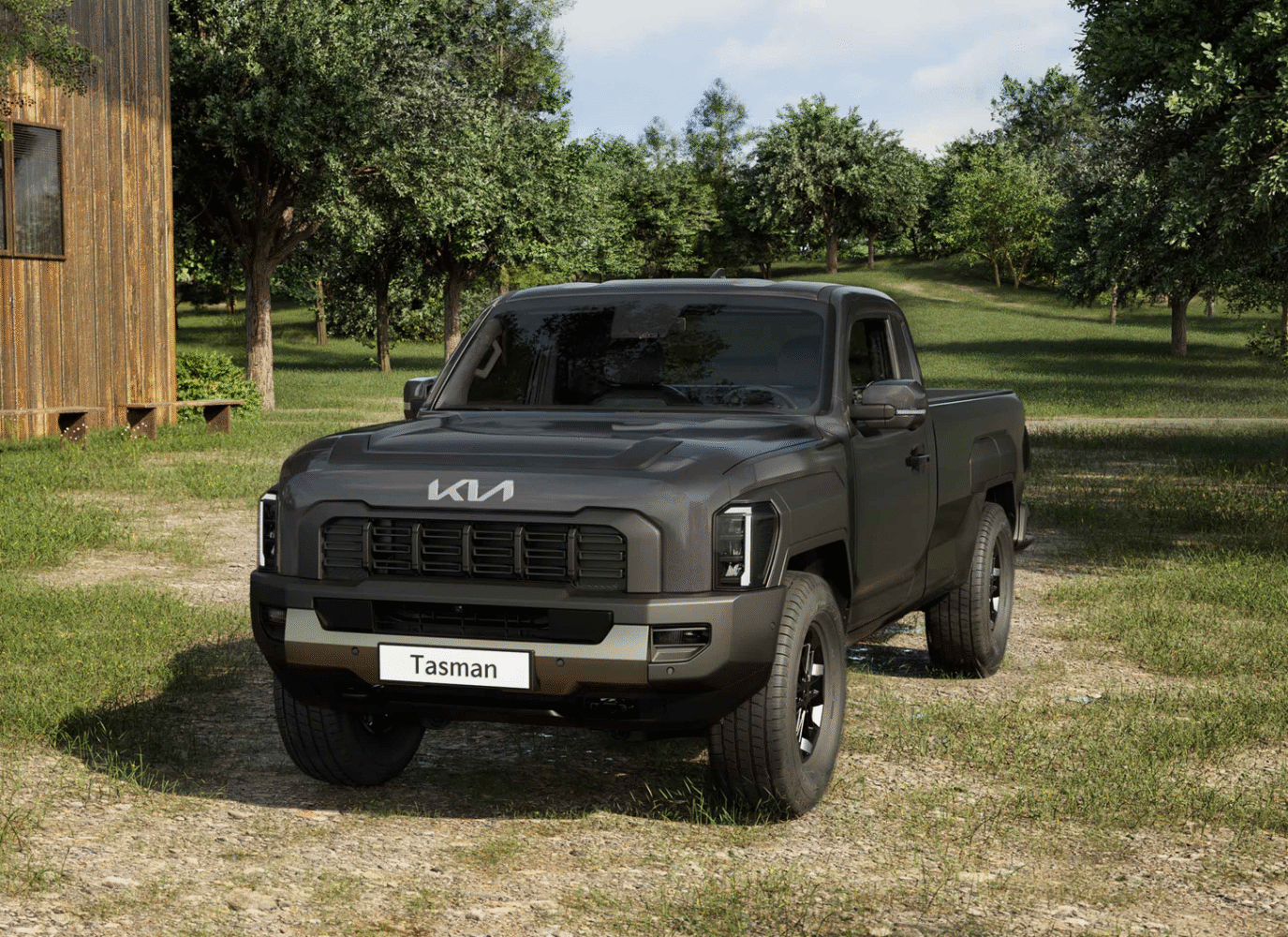
Towing features such as a dedicated tow mode on the automatic transmission optimize gear shifts for stability and efficiency. Kia also introduces trailer brake control and trailer stability assist to minimize sway and improve safety during towing.
Cargo capacity is another highlight. The bed measures 1,573mm long, 1,600mm wide, and 543mm deep, offering 1,212 liters of volume—large enough to accommodate standard pallets in global markets. With built-in divider slots, tie-down hooks, cargo rails, bed liners, side lighting, and a 220V inverter, the bed is designed for practical use. Optional accessories include canopies, sports bars, bed covers, sliding trays, and side steps, providing further customization for different needs.
Inside, the Tasman prioritizes passenger comfort with spacious rear legroom, headroom, and shoulder room. The second-row seats feature a sliding and reclining function, which is uncommon in midsize pickups. Acoustic glass and sound-absorbing materials contribute to a quieter cabin experience, while optimized airflow reduces wind and road noise.
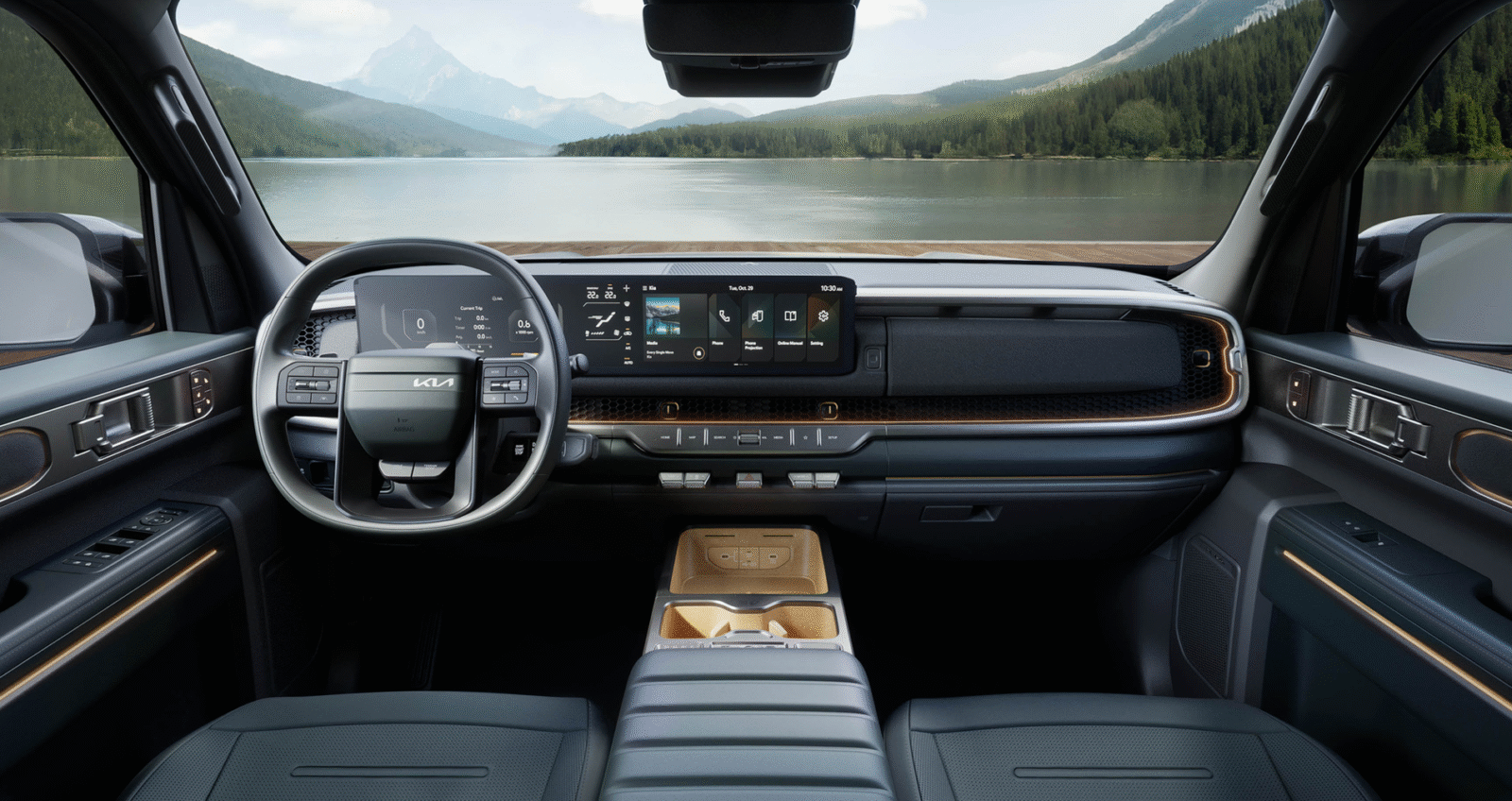
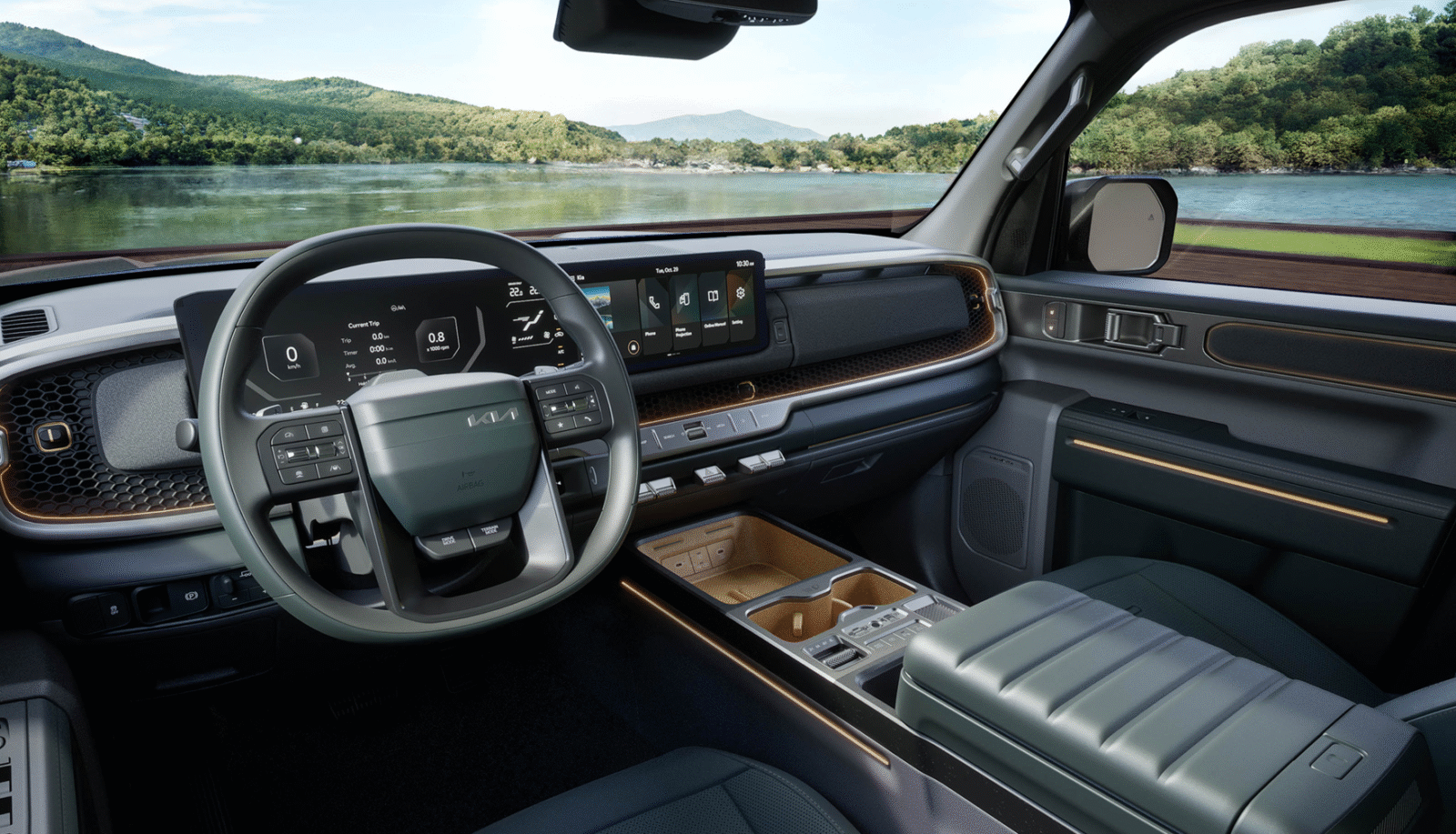

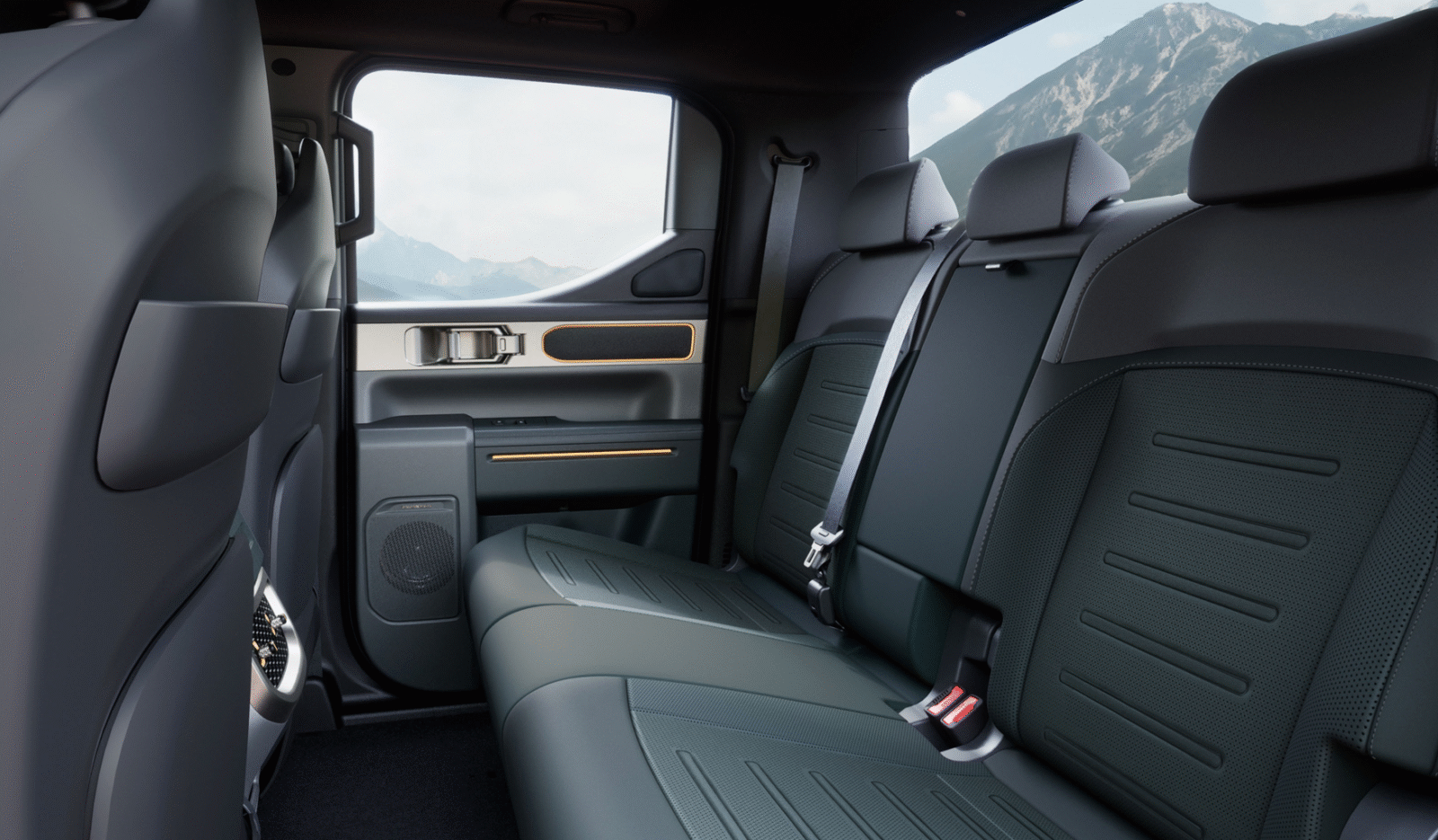
The infotainment system features a combined 12.3-inch digital instrument cluster, a 5-inch segment display, and a 12.3-inch central touchscreen, all running on Kia’s latest Connected Car Navigation Cockpit interface. A Harman Kardon sound system delivers audio quality, while practical touches include a foldable console table and a 33-liter under-seat storage compartment.

